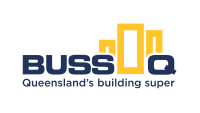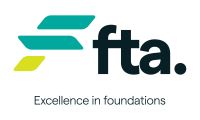What is a psychosocial hazard?
A psychosocial hazard is anything that could cause psychological harm, for example, harm someone’s mental health. Psychosocial hazards can create stress, which in turn can cause psychological or physical harm.
Stress itself is not an injury. But if workers are stressed often, over a long time, or the level of stress is high, it can cause harm. Psychological harm may include anxiety, depression, post-traumatic stress disorder, sleep disorders, Physical harm may include musculoskeletal injuries, chronic disease or fatigue related injuries.
Psychosocial hazards may interact or combine to create new, changed or higher risks. It is important to consider all the psychosocial hazards workers may be exposed to when managing psychosocial risks. Some hazards may not create psychosocial risks on their own but may do so if combined with other hazards. For example, when workloads are high, the risk may increase if workers cannot take breaks or there is no one around to help. Some hazards may only create risks on their own when severe.
What are identifiable psychosocial hazards?
Each workplace, job site and company will have its own unique set of circumstances, and different psychosocial hazards may arise in these situations. Some of these hazards include:
- Job demands, both high and low
- Low job control
- Poor support
- Lack of role clarity
- Poor organisational change management
- Inadequate reward and recognition
- Poor organisational justice
- Traumatic events or material
- Remote or isolated work
- Poor physical environment
- Violence and aggression
- Bullying
- Harassment, including sexual harassment, and
- Conflict or poor workplace relationships and interactions.
What are PCBU duties and responsibilities?
A person conducting a business or undertaking (PCBU) must eliminate psychosocial risks, or if that is not reasonably practicable, minimise them so far as is reasonably practicable.
- Psychosocial hazards may not be visible, and it’s the PCBUs duty to actively seek to identify and control the hazards
- PCBUs must consult with their workers in all stages of identifying and controlling psychosocial hazards
- PCBUs must implement controls from a foundational level (management, work design, work tasks etc)
- Documentation of systems and controls is vital – having documentation and records of assessments, controls, discussions, consultations and reviews will be required.
How to manage psychosocial hazards at work
1. Identification of psychosocial hazardsIdentify psychosocial hazards present in the workplace by observing the workplace, its overarching environment and conditions, and consulting with workers. For example, if a PCBU operates with staff working a ‘fly in, fly out (FIFO)' model, then remote and isolated work is a hazard that is present in within that workplace. | 2. Assess the risksOnce hazards present in the workplace have been identified, they must be assessed to determine:
PCBUs must ensure that during this stage workers are consulted with to determine as many risks as possible. |
3. Implement controlsPCBUs will need to implement the controls into the workplace. This can be completed to ensure the controls are adhered to in the workplace by actioning:
| 4. Record, monitor and review controlsIt’s important to record and document all controls, consultations and actions taken to manage psychosocial hazards. Once controls have been implemented, it's not enough to 'set and forget', PCBUs must outline measures that will be taken in order to continuously monitor and review these hazards. |
Controls for Psychosocial Hazards
Controls for psychosocial hazards will be unique to every workplace and need to be selected with the consultation of workers to determine the most appropriate controls. There are controls that focus on the job design that are essential, and there are controls that focus on workers response to hazards, the extras.
Essential requirementsThe essentials for managing psychosocial hazards focus on changing the job design, environment and structure as a way of eliminating the hazards. These include:
| ExtrasThe extras for managing psychosocial hazards impact the way a worker responds to hazards that will still be present after these controls are implemented. These include:
|
Resources for managing psychosocial hazards
Focus Group Guide Focus groups can help identify and analyse emerging psychosocial hazards and inform future planning identified in the risk assessment process. They’re ideal for consulting with workers and enable the collection of meaningful data on people’s perceptions of their work environment. | People at Work A free and validated Australian psychosocial risk assessment survey. Designed for businesses with 20 employees or more, that allows insight into a workplace and how to take action to improve mental wellbeing within it. |
Need more information?
If you haven’t found the answer to your questions on our website, give us a call or email us.





